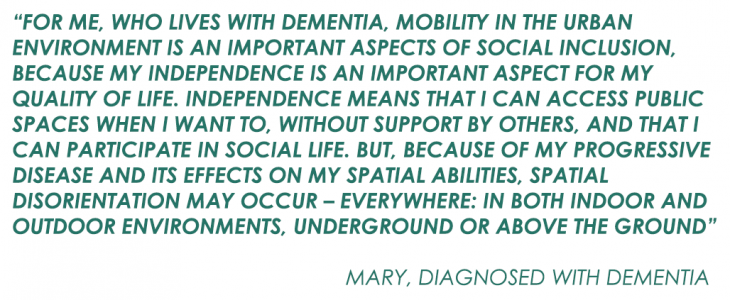Introduction
Dementia is the loss of cognitive functioning — thinking, remembering, and reasoning — to such an extent that it interferes with a person’s daily life and activities. Some people with dementia cannot control their emotions, and their personalities may change. Dementia ranges in severity from the mildest stage, when it is just beginning to affect a person’s functioning, to the most severe stage, when the person must depend completely on others for basic activities of living.
Key facts
- Although dementia mainly affects older people, it is not an inevitable consequence of aging.
- Currently, more than 55 million people live with dementia worldwide, and there are nearly 10 million new cases every year.
- Dementia results from a variety of diseases and injuries that primarily or secondarily affect the brain. Alzheimer’s disease is the most common form of dementia and may contribute to 60-70% of cases.
- Dementia is currently the seventh leading cause of death among all diseases and one of the major causes of disability and dependency among older people globally.
- Dementia has physical, psychological, social, and economic impacts, not only for people living with dementia but also on their careers, families, and society at large.
According to a recent online survey of 1000 caregivers of people with dementia, the prevalence of getting lost in community-dwelling people with dementia was 32.3%. After the missing episodes, 84.5% of caregivers felt worried about the future getting lost. 41.4% of caregivers would restrict the care recipients from going out, and 28.5% would lock the doors to prevent the care recipients from going out.
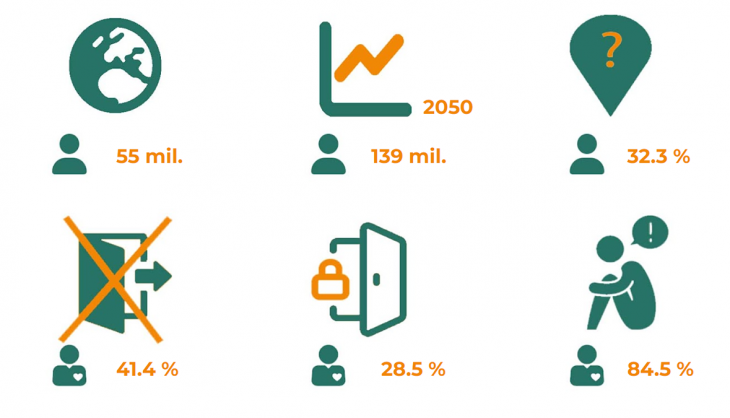
Dementia ranges
Dementia ranges in severity from the mildest stage, when it is just beginning to affect a person’s functioning, to the most severe stage, when the person must depend completely on others for basic activities of living. During our project, we focus on patients who cope with the first two stages of dementia
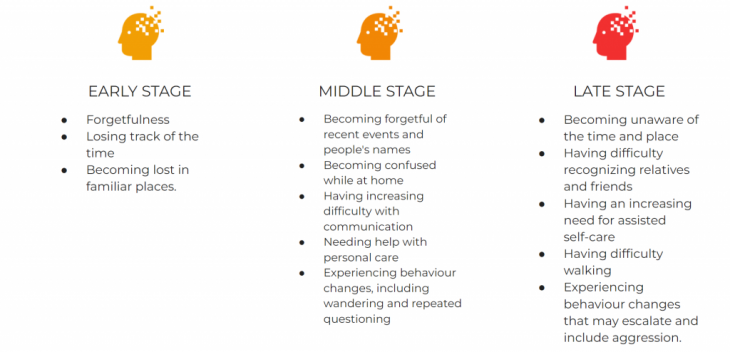
Disruption in the system
When people with dementia walk
Although the word ‘wandering’ is often used to describe walking by people with dementia, the term suggests that there is no aim to the person’s walking, which is not actually the case. There is nearly always a reason why a person with dementia wants to walk. It might simply be that the person has energy they wish to use. Or it could be that the person is walking to try to resolve some kind of problem they have – perhaps they are completely bored, or maybe they are looking for something.
Some reasons why a person with dementia might walk include:
- The person might be lost and trying to find their way.
- The person might be looking for someone or something which may or may not be there.
- The person might be reliving an old routine.
- The person might be trying to cope with troubling emotions or physical pain.
- The person might be lonely or bored.
- The person might feel in need of exercise or might simply enjoy walking.
The Road Home Blockchain
The goal of this project is to create a “Dementia-friendly community” by boosting the corporation between the community and the health care system. Both of them are able to create a safety net for the daily routes of dementia patients. In this way, we want to achieve the social inclusion and independence of people with dementia, support relatives and caregivers, and fill gaps in the welfare state. The anonymity of Blockchain consists of an ideal aspect for the protection of patient medical confidentiality and reduce of social marginalization and stigmatization.
Our stakeholders:
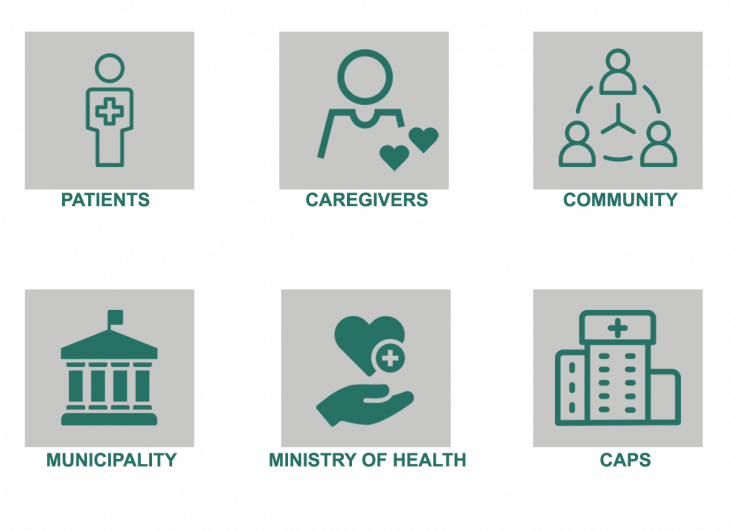
Methodology
The idea consists of three main parts. The safety pins, where are applied to the Patients and funded by their caregivers. The Platform where applies to the Helpers and the Community and is funded by the Ministry of Health. And the detector boxes where are the linchpin between the safety pins and the platform and are funded by the Municipality.
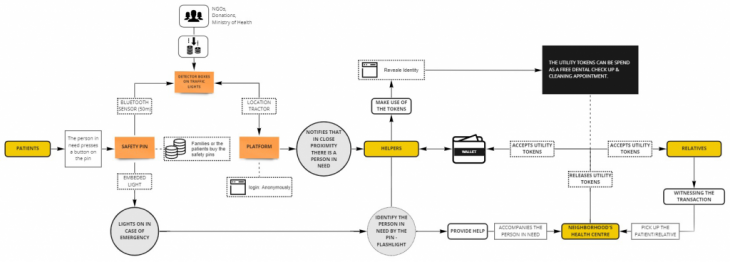
Methodology diagram
Phases of development
In order to make the bottom-up initiative sustainable, there are three phases of development.
- The first phase consists of the creation and delivery of the platform in the community. Helpers will create an anonymous account and will have an adaptation period in order to be familiar with the use of the platform. Will also create a Metamask account and will be introduced in the Blockchain backend structure of it.
- The second phase consists of the purchase of the safety pins, from the caregivers to the patients, which at this point in case of emergency on the streets can be used with the embedded button they carry.
- The third and last development phase of the initiative consists of the implementation of the detector boxes on the traffic lights, which will provide a more secure and safe network. It is divided into three subphases with the first being the placement of detector boxes on traffic lights in a catchment area of 500m away from the CAPs in neighborhoods with the highest elderly population in the city. The second is the placement of detector boxes in the rest of the CAPs in the city, and the final is the implementation of them in the whole city and especially in areas with high noise pollution.
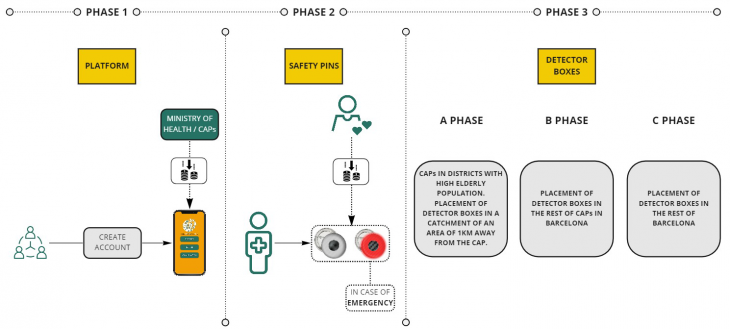
Phases of implementation
The platform
The platform can be used either before or after the implementation of the detector boxes. Will be the backbone of the initiative. It will raise awareness, will create a safe network of safe routes for the patients, and will stimulate the community to provide help to people in need. Helpers will keep their anonymity till the time they will redeem their CareTimecoins after a successful transaction, by accompanying the person in need in the safe space of the nearest CAP. It will work with blockchain technology through Metamask and Gnosis Safe.
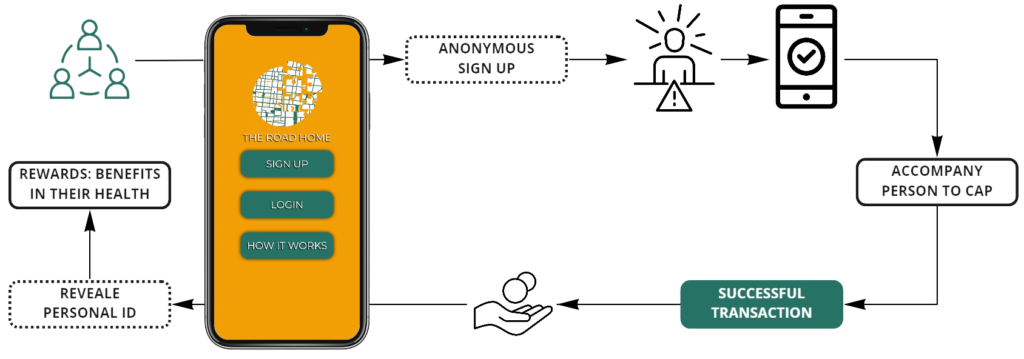
How the platform works
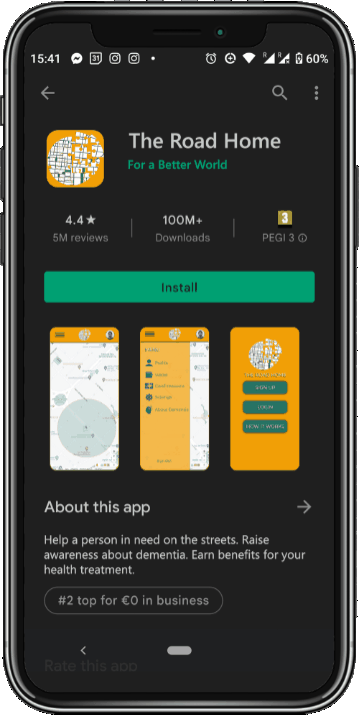
Blockchain implementation
Safety pins
Safety pins can work independently from the detector boxes, by pressing the button they carry which will make them light on, working as an emergency signal for the community and the potential helpers they are in close proximity to them.
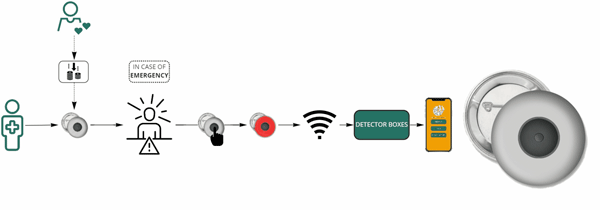
How the safety pins work
Detector boxes
Detector boxes will provide an additional safe network for patients by communicating with the safety pins with their bluetooth sensors. By that, they will provide the location of the person in need to the helpers that use the platform and not only to helpers that are within sight with a lighted safety pin. They will provide, through a database, a safe movement area based on their daily routine and will notify the helpers when a patient has been founded outside of that area but has forgotten to press the button on the safety pin.
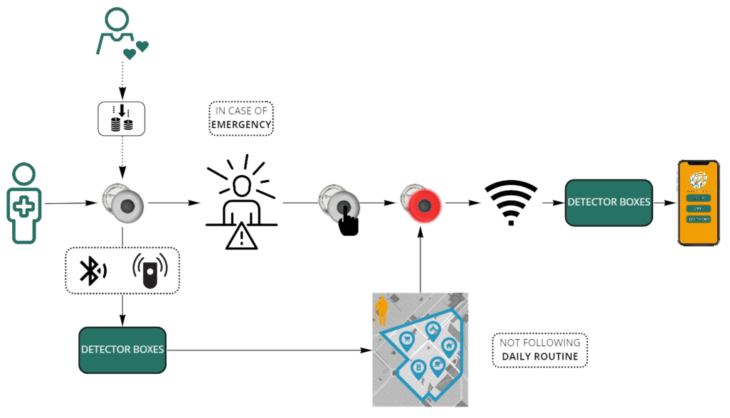
How detector boxes work
CRYPTOURBANOMICS MODEL
Why we need blockchain
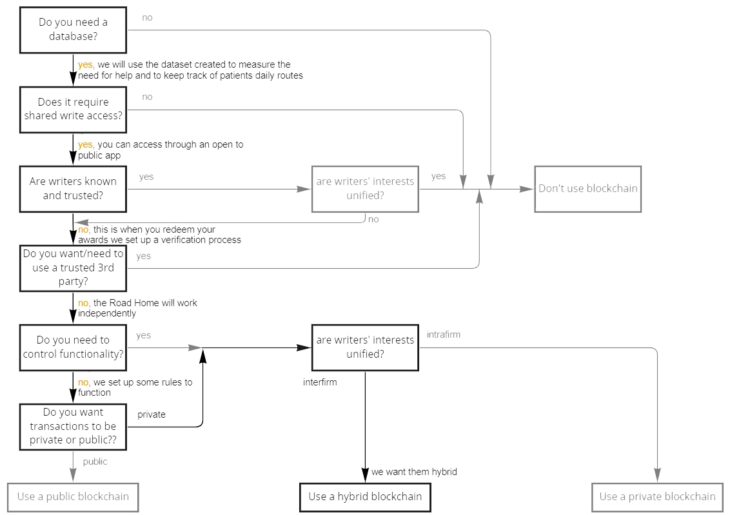
Blockchain characteristics
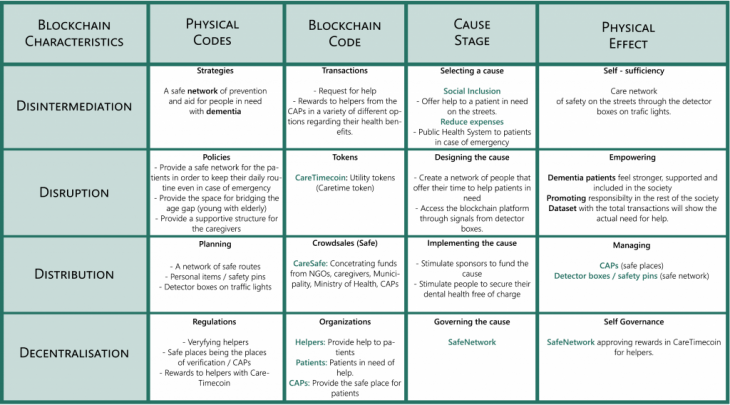
Case Study
The third development phase of the detector boxes which will allow the GPS allocation of the safety pins in the city is divided into three subphases. Barcelona will be the city of study.
Eixample has the highest elderly population aged more than 65 years old, so it will be the first district where detector boxes will be placed on traffic lights. There are 7 health centers (CAPs) in the district. By creating a catchment area of 500m. around each CAP we strategically choose the traffic lights that will carry the detector boxes, based on the noise pollution that exists in that streets. After testing their effectiveness, the same process will be repeated in the rest of the CAPs in the rest of the districts. Eventually, Barcelona will have a safe network of nodes where people in need of help will be protected.
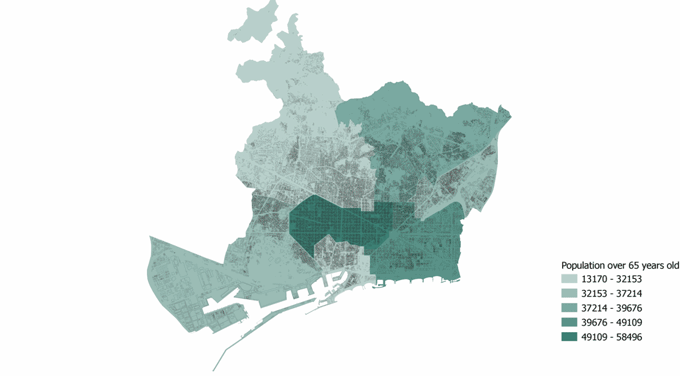
Phases of implementation of the case study
Benefits
The main objective of the initiative is to create a secure network for patients in need in their city. Will raise awareness for a mental illness that excludes people from the rest of the community and creates high costs for the governments while trying to cope with conventional and centralized methods.
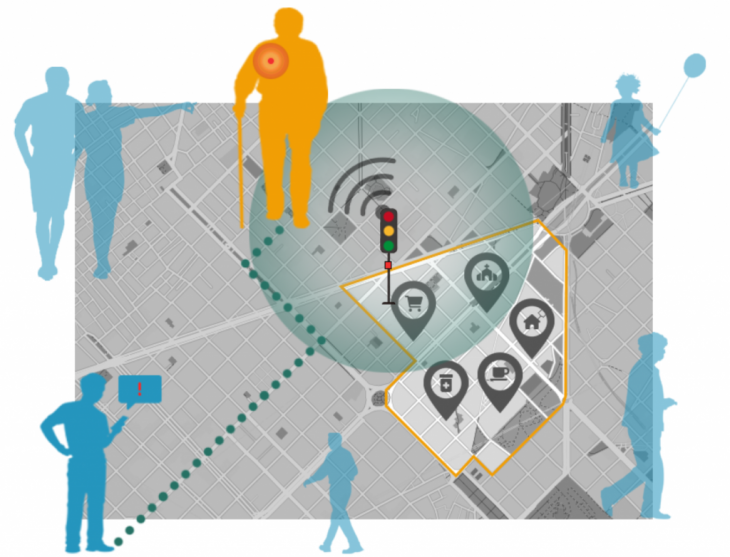
THE ROAD HOME is a project of IAAC, Institute for Advanced Architecture of Catalonia developed in the Master in City & Technology 2021/22 by Students: Maria Magkavali & Dimitris Lampriadis and Faculty: Lluisa Marsal
